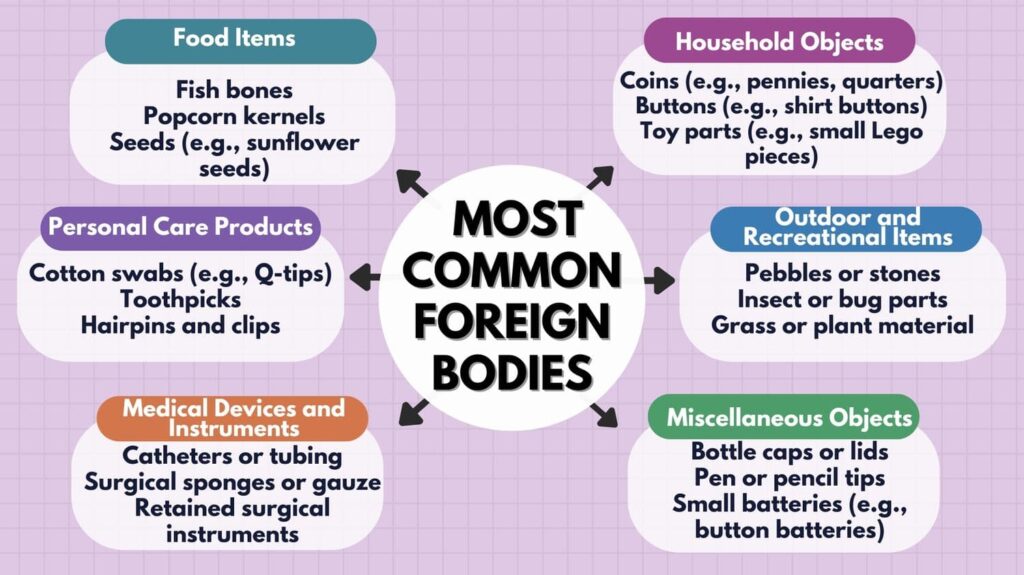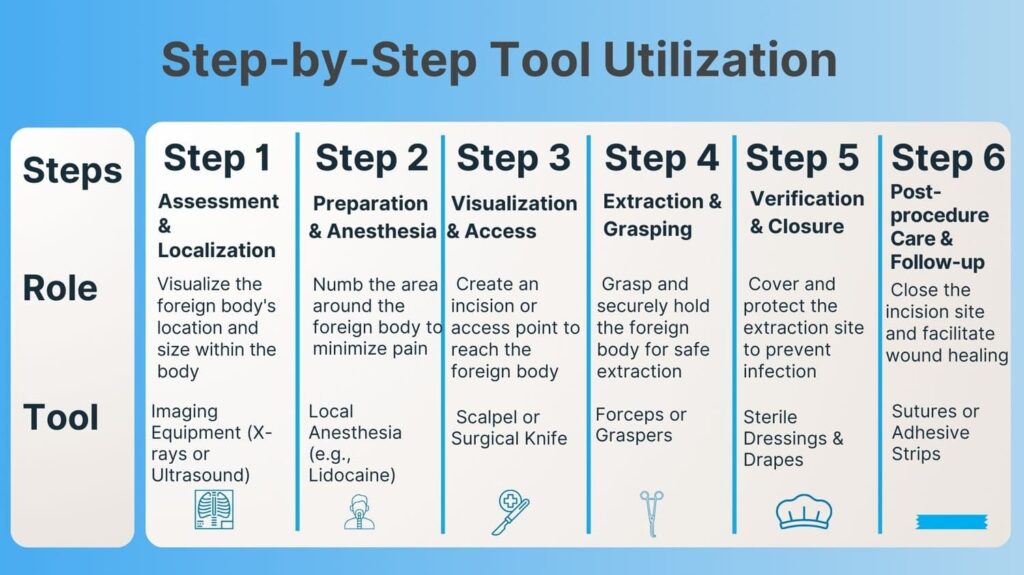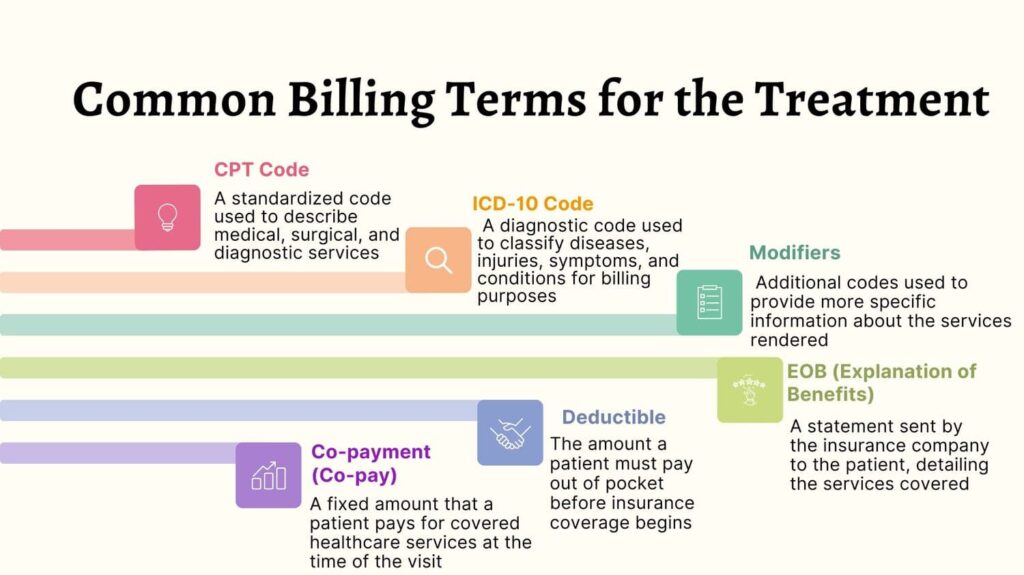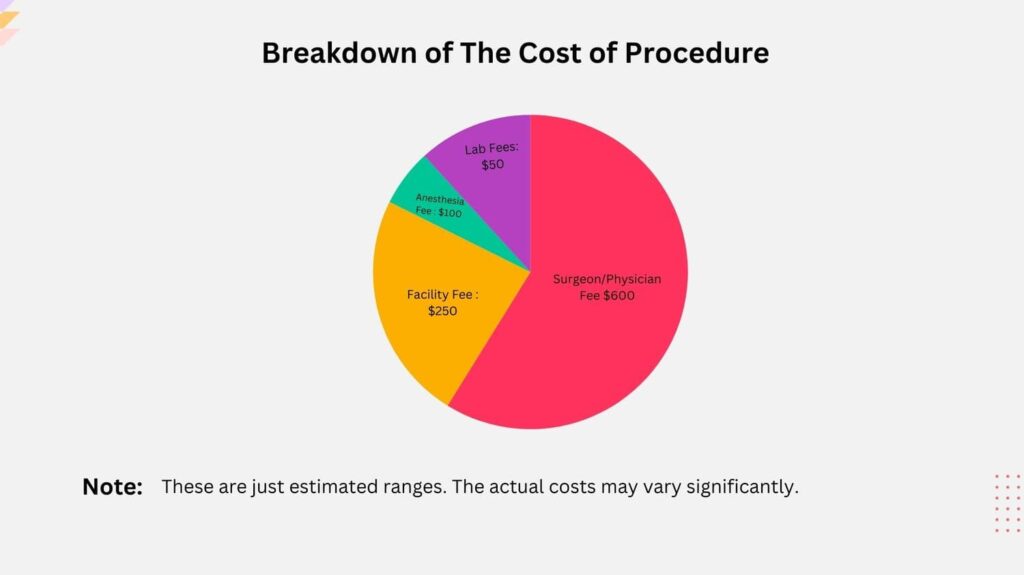As a patient, you might have heard of the procedure of CPT removal of foreign body. But many of you confuse this term with a part of CPT codes.
In reality, the code identifies the procedure done on a patient to remove any element or foreign substance.
So why has this CPT code gained much popularity in healthcare facilities? Let’s look at the utilization and importance of CPT code for the removal of foreign body codes and how they are used in a medical bill.
What Are CPT Codes?
The American Medical Association (AMA) develops and maintains CPT codes. These codes are a standardized set of numbers and descriptions that help describe medical services and procedures.
Each code is associated with a particular medical treatment or service, enabling healthcare professionals to express the services delivered in simple terms.
Role Of the CPT Removal Of Foreign Body
A unique CPT code is given to the operation when a patient has to have a foreign body removed, such as a splinter, an implanted item, or other foreign material.
This code not only specifies the medical service’s type (foreign body removal), but it also offers further information on its technique, anatomical location, and any related services.
Its Components
A CPT code for foreign body removal typically consists of the following components:
Code Number: This five-digit number is specific to each medical treatment. For instance, the CPT code 10100 may describe the removal of a splinter.
Description: A succinct summary that gives further background on the process is included with each CPT code. The code 10100 in our example may be referred to as “Removal of superficial foreign body, subcutaneous; simple.”
Anatomical Location: Some CPT codes provide information on the body part where a procedure was carried out. This promotes coding accuracy and precision.
Why Accurate Coding Matters?
Accurate coding is crucial for several reasons:
Billing and Reimbursement: When billing patients, insurance companies, or government healthcare programs, healthcare practitioners utilize CPT codes.
The proper payment of reimbursement for their services is ensured through accurate coding.
Insurance Claims: CPT codes are used by insurance companies to process claims. Coding mistakes or inconsistencies might result in claim denials or payment delays.
Medical Records: Maintaining accurate medical records that are necessary for patient care, treatment continuity, and legal documentation all depend on proper coding.
The Foreign Body Removal Procedure Step-By-Step

CPT removal of foreign bodies includes a typical medical treatment carried out in a variety of healthcare settings, including emergency departments, outpatient clinics, and surgical facilities.
This detailed instruction manual offers an in-depth look at how medical experts normally remove foreign bodies, ensuring patient security and effective extraction.
Step 1: Patient Assessment & Consent
Patient History: A complete analysis of the patient’s medical history is done before the treatment even starts. Here any known allergies, prior operations, or underlying illnesses that might influence the process are identified.
Clinical Examination: A physical examination is carried out to find the foreign body and determine its location, depth, and closeness to important tissues.
Informed Consent: The medical professional informs the patient or their legal guardian about the procedure’s dangers, advantages, and alternatives before beginning.
It is ensured that the patient is aware of the therapy and consents to it by obtaining informed assent.
Step 2: Pre-procedure Preparation
Gathering Supplies: Sterile gloves, forceps, syringes, and local anesthesia are all ready and available, along with other essential medical equipment.
Anesthesia: To numb the tissue and lessen pain during the surgery, local anesthesia is applied to the afflicted region. The location and kind of the foreign body determine the best type of anesthesia.
| Anesthesia Option | Benefits | Risks | Common Usage Scenarios |
| Local Anesthesia | -Minimally invasive -Rapid onset and localized numbness -Reduced risk of systemic side effects | -Allergic reactions -Nerve damage -Bleeding or hematoma at injection site | -Minor procedures involving superficial tissues -Procedures in outpatient settings -Patients with contraindications to general anesthesia |
| General Anesthesia | -Complete unconsciousness and pain relief -Muscle relaxation for surgical manipulation -Allows for patient immobility and control | -Respiratory depression or airway obstruction -Nausea, vomiting -Postoperative cognitive dysfunction | -Complex or lengthy procedures requiring deep sedation -Invasive procedures in critical care settings -Patients requiring airway management or mechanical ventilation |
Learn more about CPT Removal of Foreign Body Billing for Providers
Step 3: Localization & Visualization
Imaging: A foreign body may occasionally need to be carefully located and visualized via diagnostic imaging, such as X-rays or ultrasound.
This process is conducted when the object is deeply implanted or cannot be seen with a physical examination alone.
Sterile Field: To avoid infection, a sterile zone is created surrounding the operation area. Aseptic conditions are kept by using sterile drapes and tools.
Step 4: Extraction
Incision: A tiny incision is made over the foreign body using a scalpel if it is visible and easily accessible. A deeper incision may be required for larger things.
Forceps or Graspers: The foreign object is gently grasped and secured using specialized graspers. The type of item and the tissue in its immediate vicinity determine the appropriate instrument.
Gentle Manipulation: In order to do the least amount of damage to the surrounding tissue, the medical professional carefully manipulates the foreign body.
Step 5: Verification & Closure
Verification: The medical professional confirms that the entire foreign body has been eliminated after extraction. A thorough visual check or further imaging may be required for this.
Wound Closure: If an incision is created, it is painstakingly cleaned, and then stitched or sealed with adhesive strips. The dressing is sterile.
Step 6: Post-procedure Care & Follow-up
Pain Management: As required, the patient receives the proper pain alleviation.
Instructions: Following the operation, detailed post-operative instructions are provided, covering wound care, medication, and any activity limitations.
Follow-up: To keep track of the healing process and make sure there are no issues, a follow-up session is planned.
Equipment And Tools Used In Foreign Body Removal

Healthcare experts rely on a variety of specialized instruments and equipment during removal of foreign body to guarantee a safe and efficient treatment.
But here are some risks associated with the treatment as well, have a look at these:
| Risk Factor | Description | Solutions/Prevention |
| Difficulty in Localization | Challenges in accurately localizing the foreign body within the body due to its size or location | Advanced imaging modalities for precise localization, such as fluoroscopy, CT scans, or ultrasound |
| Foreign Body Migration | Foreign bodies may migrate within the body during the extraction process, making retrieval more challenging | Usage of appropriate tools and techniques to secure and stabilize the foreign body during extraction |
| Anesthesia-related Complications | Adverse reactions or complications associated with anesthesia administration, such as respiratory depression or allergic reactions | Thorough pre-procedure assessments to identify any contraindications or risks associated with anesthesia |
| Surgical Complications | Risk of surgical complications, such as bleeding, infection, or tissue damage, during the extraction process | Strict sterile technique and infection control protocols to minimize the risk of surgical complications |
In this part, we’ll look at the key tools used in foreign body removal and describe the functions of each.
Forceps Or Graspers
Similar to fine tweezers, forceps, also known as graspers, are used to grip and move items.
How They’re Used: Forceps are used by medical professionals to precisely remove the foreign body while preventing injury to the nearby tissues.
Why They’re Important: The dexterity and control required for the removal procedure are provided by forceps.
Scalpel Or Surgical Knife
A scalpel is a tiny, razor-sharp knife used during operations and other medical procedures.
How It’s Used: When the foreign body is difficult to reach or when a precise cut is required, it is utilized to produce a tiny incision in the skin.
Why It’s Important: A scalpel makes it possible to precisely regulate the incision, causing the least damage to the nearby tissue.
Local Anesthesia
Local anesthesia is a drug that makes a particular body part painless during an operation by numbing it.
How It’s Used: To stop pain and suffering, it is injected into the skin or tissues close to the foreign body.
Why It’s Important: The patient’s comfort is increased with local anesthesia, which makes sure they don’t experience any discomfort during the treatment.
Sterile Dressings & Drapes
Sterile drapes are sterile sheets used to create a clean field surrounding the surgical area, whereas sterile dressings are clean, sterile covers for wounds.
Access The Tool to Get All Codes
How They’re Used: After the foreign body has been removed, sterile dressings are placed on the incision. Sterile drapes keep the area surrounding the treatment site clean.
Why They’re Important: Throughout the operation, these supplies preserve hygiene and prevent infection.
Imaging Equipment (X-rays Or Ultrasound)
Images of the inside of the body are produced by imaging technology like X-ray machines and ultrasound devices.
How They’re Used: When the foreign body cannot be seen from the outside, it aids in visualizing its location and depth.
Why They’re Important: Imaging guarantees precise planning and directs the medical professional during the removal procedure.
Sutures Or Adhesive Strips
Adhesive strips are specialized bandage-like tapes, whereas sutures are stitches used to seal surgical wounds.
How They’re Used: While sticky strips are used for tiny wounds, sutures are utilized to seal bigger lesions.
Why They’re Important: After the foreign body has been removed, they aid in the closure of the wound to aid in appropriate healing.
Syringe And Needle
A needle is a tiny, pointed tube that is connected to a syringe, which is a tool for drawing or injecting fluids.
How They’re Used: A syringe can be used to irrigate the wound or deliver local anesthesia.
Why They’re Important: During the process, these gadgets make it possible to distribute fluids or drugs precisely.
Billing And Insurance Considerations

It can occasionally feel like a complicated maze navigating the financial elements of healthcare, including insurance and billing.
But as a patient, you must know the intricacies of the billing process of removal of foreign body cpt code. Here we’ve simplified some considerations you should have in mind.
Understanding The Billing Process
It’s crucial to understand the billing process before you or a loved one has a foreign body removal operation. Here is an explanation in simple terms:
Medical Coding: Every medical treatment, including the removal of foreign bodies, is given a unique code.
The operation is described to insurance companies using these codes, known as Current Procedural Terminology (CPT) codes.
Claim Submission: Your healthcare provider makes a claim to your insurance company when the operation is finished. The CPT code on this claim informs the insurance provider of the procedure’s details.
Coverage Review: Your insurance provider looks through the claim and your policy to determine whether parts of the surgery are covered.
Payment: If the procedure is covered by your insurance, they will reimburse the healthcare provider for a portion of the cost.
You can also be required to make a partial payment, known as a “copayment” or “coinsurance.”
In-Network vs. Out-of-Network Providers
In-Network Providers: These are medical professionals who have contracts with your insurance carrier to offer their services at fixed prices. Your insurer is more likely to pay more of the bill when you go to an in-network provider.
Out-of-Network Providers: These are service providers with which your insurance company does not have contracts.
If you decide to use an out-of-network provider, your insurance may give less coverage, and you could have to pay a larger portion of the bill.
Pre-Authorization And Referral Requirements
Pre-Authorization: For several insurance treatments, including the removal of foreign bodies, prior authorization or approval is required. Your healthcare practitioner will work with your insurance to get the clearance.
Unlock the Detailed Guide to CPT
Referrals: In some circumstances, you might require a referral from your primary care physician to visit a specialist for treatment. Find out whether referrals are necessary by speaking with your insurance provider.
Billing Questions To Ask
Here are some crucial inquiries to think about when invoicing for a CPT code for removal of foreign body procedure:
What’s Covered: Contact your insurance provider to find out what percentage of the operation is covered by insurance and what you could be liable for paying.
Out-of-Pocket Costs: To learn more about your out-of-pocket costs, such as deductibles, co-payments, and co-insurance, ask your doctor.
In-Network Providers: To maximize your insurance coverage, select an in-network provider if at all feasible.
Pre-Authorization: If pre-authorization is required, confirm with your healthcare practitioner and make sure it is obtained.
Bill Review: To guarantee accuracy, always check the bills you get from your healthcare and insurance provider.
Frequently Asked Questions About CPT Removal Of Foreign Body

Patients and their families frequently have queries and worries about medical procedures like the removal of a foreign body.
In order to offer concise, understandable responses to some of the most often asked topics, we’ve gathered them here.
What is a CPT code, and why does it matter for foreign body removal?
In the medical industry, individual operations and services are identified by CPT codes, which are standardized codes.
It is essential for foreign body removal since it enables medical practitioners to appropriately document and charge for the service.
Additionally, it guarantees that insurance claims are handled properly. It may be difficult to adequately convey and document the operation without the correct CPT code.
Is foreign body removal always a surgical procedure?
No, surgery is not necessary for all foreign body removals. Foreign bodies may frequently be eliminated without surgery by employing forceps or other non-invasive tools.
Surgery is normally only used in more complicated instances where non-surgical treatments have failed.
How painful is the foreign body removal procedure?
Healthcare professionals take precautions to reduce pain and discomfort throughout the treatment, but pain perception might differ from person to person.
In order to numb the region and make the treatment as painless as possible, local anesthesia is frequently employed. Patients shouldn’t have severe pain, although they could feel some pressure or mild discomfort.
What happens if the foreign body is not removed promptly?
Long-term implantation of a foreign body can result in a number of problems, including inflammation, tissue damage, and infections.
To prevent these problems and ensure a quicker recovery, it’s critical to get foreign bodies removed as soon as possible.
Want to Know More About CPT Codes? Click the Button
Can foreign bodies be removed in a doctor’s office, or is it always done in a hospital setting?
The precise conditions will determine where the foreign body removal treatment will take place. In certain minor situations, a doctor’s office or clinic can manage the treatment.
However, more complicated situations or those involving deeply embedded foreign bodies can be needed for a hospital environment with access to specialized tools and operating rooms.
Are there risks associated with foreign body removal?
The removal of foreign bodies can pose certain dangers, just like any medical operation. Infection, hemorrhage, harm to the neighboring tissues, and, in rare circumstances, the requirement for further surgery, are a few of these hazards.
However, medical professionals take measures to reduce these dangers and guarantee a safe process.
Will I be awake during the foreign body removal procedure?
Patients are often awake throughout treatments to remove foreign bodies. The region is numbed with local anesthesia so that you experience minimal discomfort.
Nevertheless, throughout the process, some individuals may experience pressure or pain.
How long does the recovery process take after foreign body removal?
Recovery times might change based on the procedure’s intricacy and location, for example. In many instances, patients may return to their normal activities within a day or two following the surgery.
To aid in your recuperation, your healthcare practitioner will provide you with detailed post-procedure instructions.
Will insurance cover the cost of foreign body removal?
Your insurance plan and the particulars of the treatment will determine whether or not the cost of removal of foreign body is covered by insurance.
Consult your insurance company to learn more about your coverage and any potential out-of-pocket costs.
Can a foreign body be naturally expelled or dissolved by the body?
Small foreign objects may occasionally spontaneously exit the body, although this is not always a given. It’s typically safer to have a foreign body removed by a medical expert because having one in the body might cause issues.
Your Complete Guide
If you are soon going into the procedure of surgery to remove certain objects from your body, CPT code for the removal of foreign body will be in your medical bill. So make sure you have a proper guide before jumping into this journey.
Also, here are the questions you should ask or know about the procedure. Now you are more informed than ever and we are sure you get proper healthcare treatment.

